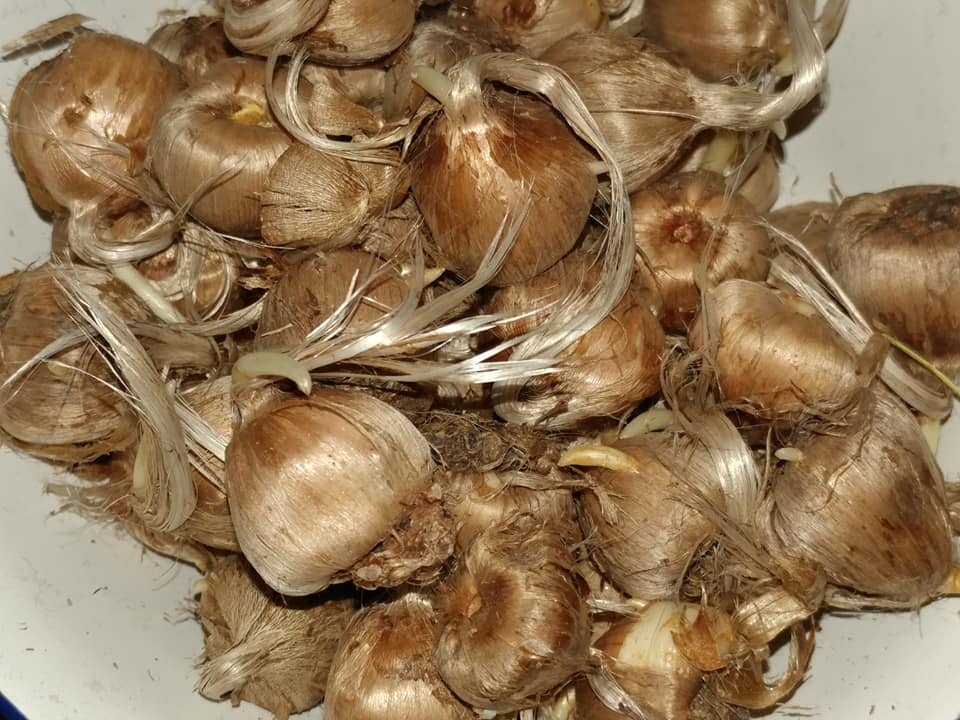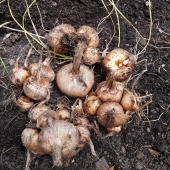
 6
6




 I think I'm more sensitive to the saffron that my mother. I used half the threads and thought it tasted extra buttery, then added the remainder because my mother couldn't taste the saffron at all. With the rest of the saffron the cauliflower is noticeably sweeter and I get some of the floral notes. I can see how easy it would be to overdo it with this spice.
I think I'm more sensitive to the saffron that my mother. I used half the threads and thought it tasted extra buttery, then added the remainder because my mother couldn't taste the saffron at all. With the rest of the saffron the cauliflower is noticeably sweeter and I get some of the floral notes. I can see how easy it would be to overdo it with this spice.
 4
4




 2
2




“You meet your destiny on the road you take to avoid it.”
~ Carl Jung

 4
4




List of Bryant RedHawk's Epic Soil Series Threads We love visitors, that's why we live in a secluded cabin deep in the woods. "Buzzard's Roost (Asnikiye Heca) Farm." Promoting permaculture to save our planet.
 4
4




 2
2




 4
4




Vic Johanson
"I must Create a System, or be enslaved by another Man's"--William Blake
 6
6





How permies.com works
What is a Mother Tree ?
 7
7




 6
6




Burra Maluca wrote:I couldn't resist any longer. My other half loves to cook and was extolling the virtues of real saffron, so I bought these...
Pecan Media: food forestry and forest garden ebooks
Now available: The Native Persimmon (centennial edition)












 3
3




List of Bryant RedHawk's Epic Soil Series Threads We love visitors, that's why we live in a secluded cabin deep in the woods. "Buzzard's Roost (Asnikiye Heca) Farm." Promoting permaculture to save our planet.




Pecan Media: food forestry and forest garden ebooks
Now available: The Native Persimmon (centennial edition)
 2
2




"The only thing...more expensive than education is ignorance."~Ben Franklin
"We can easily forgive a child who is afraid of the dark; the real tragedy of life is when men are afraid of the light." ~ Plato
 6
6




Pecan Media: food forestry and forest garden ebooks
Now available: The Native Persimmon (centennial edition)
 3
3




 4
4




 2
2




 2
2




 3
3




 5
5




Moderator, Treatment Free Beekeepers group on Facebook.
https://www.facebook.com/groups/treatmentfreebeekeepers/





 2
2




Denise Kersting wrote:What is Sepp's "shock" method, if you don't mind me asking? Thanks!
 3
3




 4
4




Moderator, Treatment Free Beekeepers group on Facebook.
https://www.facebook.com/groups/treatmentfreebeekeepers/





 4
4




Denise Kersting wrote:I've been growing saffron for quite a few years and I need to dig them and divide, but everything I'm reading says do it in the fall immediately after the foliage withers and dies. Problem is, we didn't have a cold enough winter and the green grass-like leaves never died, bright green, pliable and really long. Can I dig them and divide them now in the spring or should I wait until next year?
Moderator, Treatment Free Beekeepers group on Facebook.
https://www.facebook.com/groups/treatmentfreebeekeepers/









 1
1




Once you make a decision, the universe conspires to make it happen. - Ralph Waldo Emerson

|
Or we might never have existed at all. Freaky. So we should cherish everything. Even this tiny ad:
Learn Permaculture through a little hard work
https://wheaton-labs.com/bootcamp
|





